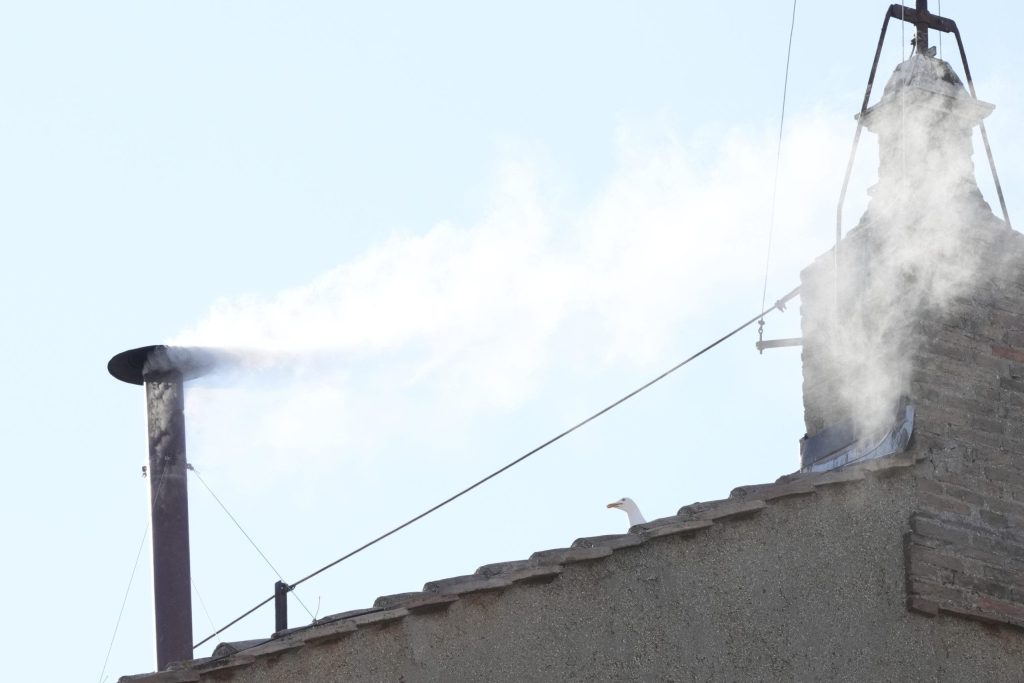On May 8, 2025, a significant moment in Catholic history occurred when white smoke was observed billowing from the chimney of the Sistine Chapel, signaling the election of a new pope. The papal conclave, which convened just a day earlier, successfully voted on their choice much earlier than anticipated, reflecting a swift consensus among the College of Cardinals. This event aligns with historical precedents, adding a layer of excitement and speculation regarding the identity of the new leader of the Catholic Church.
| Article Subheadings |
|---|
| 1) The Significance of White Smoke |
| 2) The Conclave Process |
| 3) Reflections from the Faithful |
| 4) Historical Context of Papal Elections |
| 5) The Next Steps for the New Pope |
The Significance of White Smoke
The appearance of white smoke from the Chapel is a long-standing tradition uniting the Catholic community in anticipation of pivotal changes within the Church. Understood as a sign that a new pope has been elected, the white smoke indicates that the conclave reached a two-thirds majority consensus among the voting Cardinals. This historical method of communication draws attention not only from the congregants at the Vatican but also from millions of Catholics around the world, underscoring its importance in signaling the transition of papal leadership. The sight of the smoke is particularly poignant, representing hope and renewal for the worldwide Catholic community.
The Conclave Process
The conclave for the election of the pope involves a structured procedure steeped in Church tradition. The College of Cardinals, composed of prelates under the age of 80, convenes in a closed assembly to deliberate and vote on a new pope. Initially, only one vote was set for the first day of the conclave, with subsequent potential votes in the following days. However, the swift decision on this occasion saw the Cardinals concluding voting on the second day—a notable achievement reflecting the urgency and importance of the leadership transition. Diverging from historical precedents, this rapid decision-making mirrors past votes when popes like Pope Francis and Pope Benedict XVI were elected early during their respective conclaves.
Reflections from the Faithful
As news of the white smoke spread, lay Catholics expressed a mix of excitement and hope, sharing their aspirations for the next papal leader. Many voiced their desires for a figure who would prioritize unity and outreach, addressing contemporary societal issues with compassion and understanding. This reaction reflects a growing sentiment among the faithful for a leader adept at navigating the complexities of modern life while remaining grounded in traditional Catholic teachings. There is a palpable sense of expectation as parishioners eagerly await the formal announcement of the new pope’s name and an exploration of his vision for the Church’s future.
Historical Context of Papal Elections
Papal conclaves are deeply rooted in the Catholic tradition, with a rich historical narrative surrounding the election of the pope. The last instance where a pope was elected on the first day of conclave was in 1503, with the election of Pope Julius II. While recent conclaves have taken slightly longer—such as Pope Francis’s fifth ballot election in 2013 and Pope Benedict XVI’s on the fourth ballot—the recent swift conclusion symbolizes a shift and may signify changing dynamics within the College of Cardinals. The process serves not only as a means for structure and order but also as a demonstration of the collective will of the church’s leadership.
The Next Steps for the New Pope
Following the election, a critical moment occurs when the new pope must formally accept the role, a procedure that emphasizes the gravity of the office. After accepting, he will be asked to choose a papal name, an act imbued with significance and tradition, often reflecting the new leader’s vision for his papacy. The conclave then concludes, and the new pope will be presented to the world, marking the beginning of a new chapter in the Church’s leadership. As announcements are made and ceremonies take place, the global Catholic community and beyond will closely track developments and statements from the new pope, anticipating his stance on various issues affecting the faith.
| No. | Key Points |
|---|---|
| 1 | White smoke indicates the election of a new pope, observed on May 8, 2025. |
| 2 | The conclave began with only one planned vote on the first day, but elected the pope by the second day. |
| 3 | Lay Catholics expressed hope for a leader focused on unity and outreach to societal issues. |
| 4 | Historical context reveals that popes have been elected as quickly as on the first day of conclave before. |
| 5 | The new pope will formally accept the role and choose a papal name shortly after the election. |
Summary
The election of a new pope, as signified by the emergence of white smoke on a Thursday morning, marks a pivotal moment not only for the Catholic Church but also for millions of believers worldwide. As the College of Cardinals successfully elected a new leader, the anticipation regarding the pope’s name and his intentions has heightened among the faithful. This rapid election reflects a broader desire for change and direction within the Church, unprecedented in modern times. The ongoing developments promise to shape the future of Catholicism during this transitional period.
Frequently Asked Questions
Question: What does the white smoke signify during the papal conclave?
The white smoke signifies that a new pope has been elected by the conclave of Cardinals, indicating a successful vote.
Question: How is the new pope formally chosen and accepted?
The new pope is chosen by a two-thirds majority vote among the eligible Cardinals. After election, he must accept the role and choose a papal name.
Question: What’s the historical significance of quick papal elections?
Quick papal elections, such as those occurring on the first day of conclave, are rare but indicative of a strong consensus among Cardinals, reflecting the urgency for leadership within the Church.
